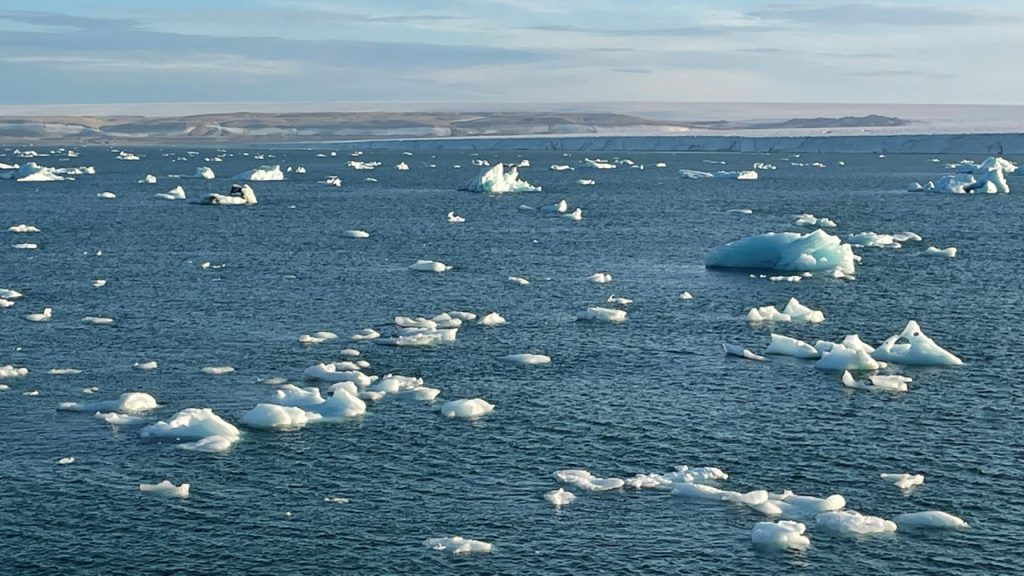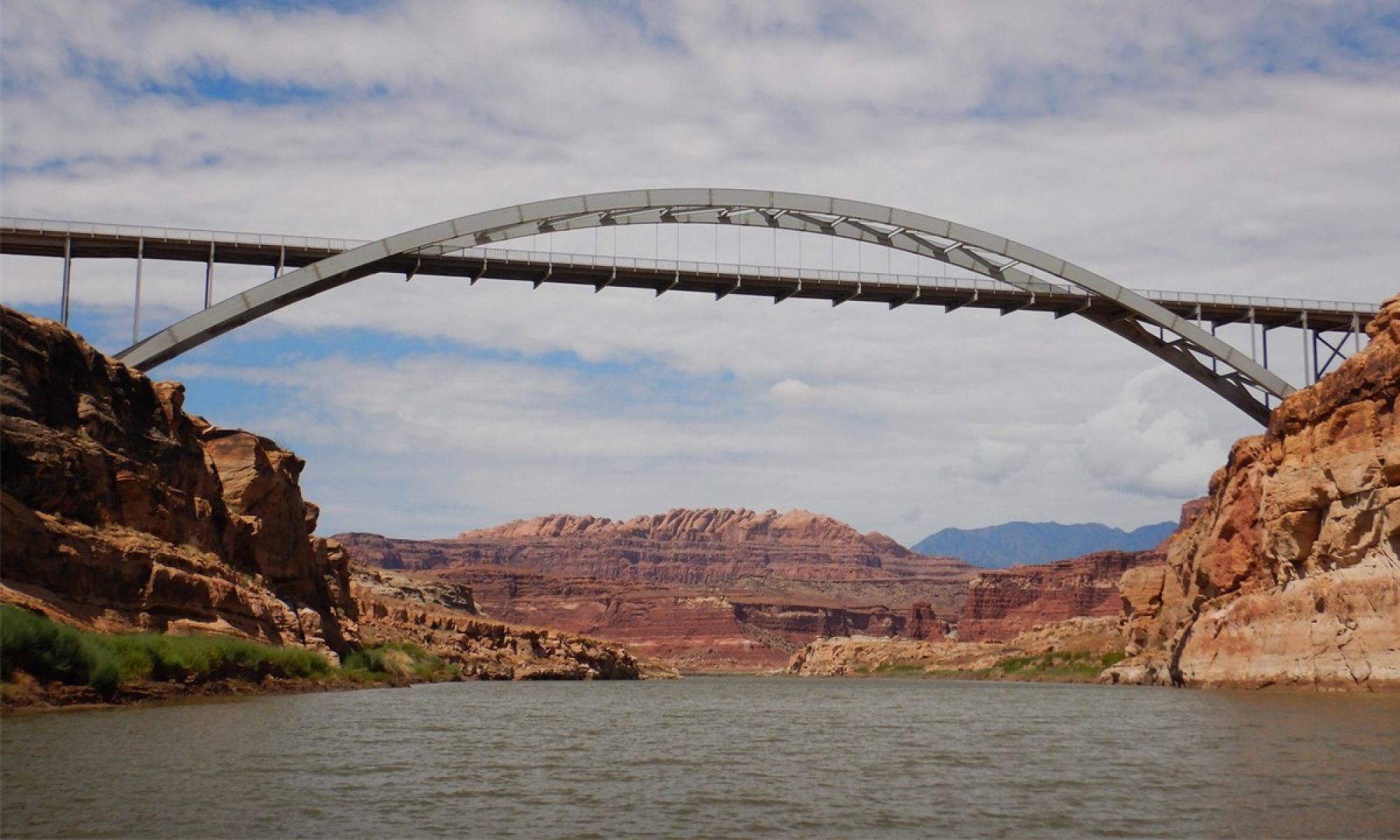August – September 2022
We began our trip to Svalbard with a private Norwegian flight from Oslo to Longyearbyen. Once there, we began to learn about the islands of Svalbard, of which the most mountainous is Spitsbergen, and whose largest town is Longyearbyen – population 2000. The other two largest towns are Sveagriva – population 500, and Ny Alesund – population 200. There are no native people to the islands as it was first discovered by Europeans in 1596 by the Dutch sea explorer Willem Barents. From 1610-1850 the Dutch and British used the islands for whaling, before being abandoned to hunters who trapped musk ox while hunting for duck, fox, and seals. In the early 20th century, the islands were used as the jumping off point in the race to the North Pole, including in 1926 when Ronald Amundson tried to reach North Pole by dirigible. In the 1930’s, coal mining became the only industry, but today there is only one coal mine left and it is scheduled to be shut down in 2025. Today, the islands’ leading industry is tourism including wildlife watching in the summer and snowmobile exploring in the winter.
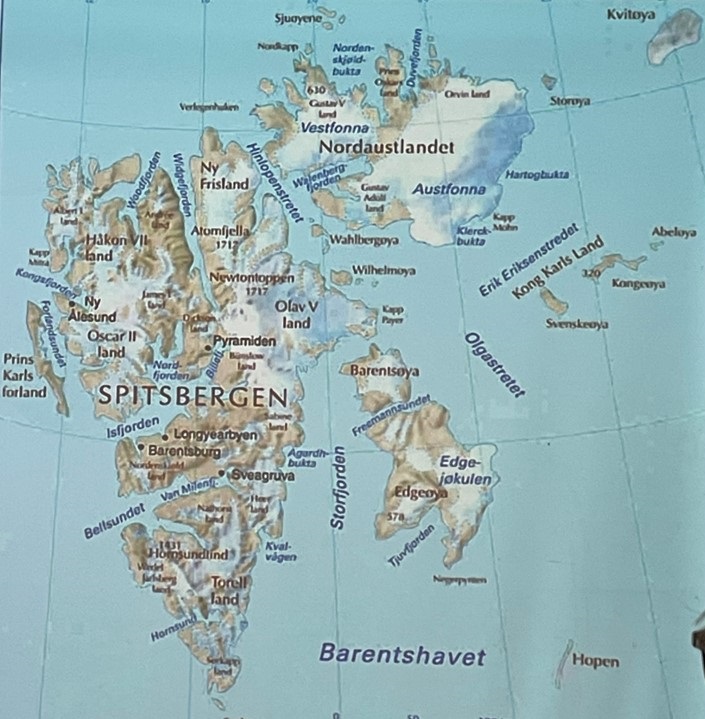
The town of Longyearbyen is located on the 78th degree parallel. From the tiny airport, we took a bus to the town’s center which consisted of one street with a dozen shops. On the hillside are the bucket line remnants of the former coal industry. We shopped for souvenirs and had a local beer before boarding our ship and being briefed on the rules of the Association of Arctic Expedition Cruise Operators (AECO). There are 152 guests on the ship with most being experienced travelers. Dinner that night was lamb followed by cocktails in main bar. The ship had a pool and an exercise center and was outfitted with zodiacs for exploring.

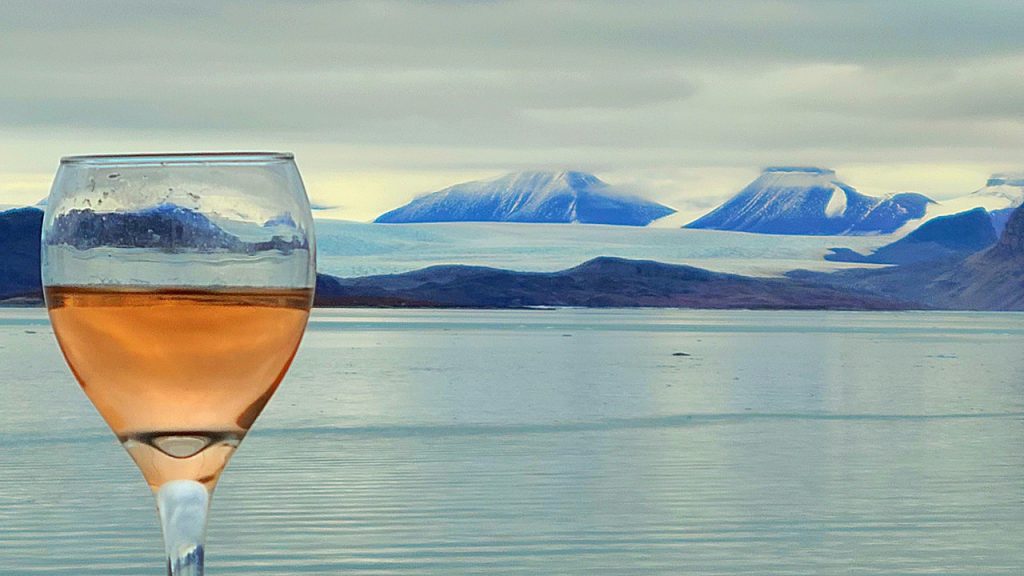
The next morning breakfast was interrupted by a Humpback whale in front of the ship. We soon went ashore at Bamsebu via zodiac where there were the remnants of hundreds of beluga whale bones as well as a research hut where 2 women spent the winter of 2019. We hiked 3-miles from the beach to a ridge, then along the ridge across a couple of valleys before returning to the beach . Along the way, we saw several reindeer who have lifespans of about 10-years. The males are ~150-200 lbs. and the females are 120-150 lbs. in size. They are vegetarian, but will eat almost any plant or root they can find. Some of the males were shedding their velvet from their antlers while we were there. They mate in October and give birth in May. We were warmed by the hot chocolate that awaited us when we returned to ship at noon.
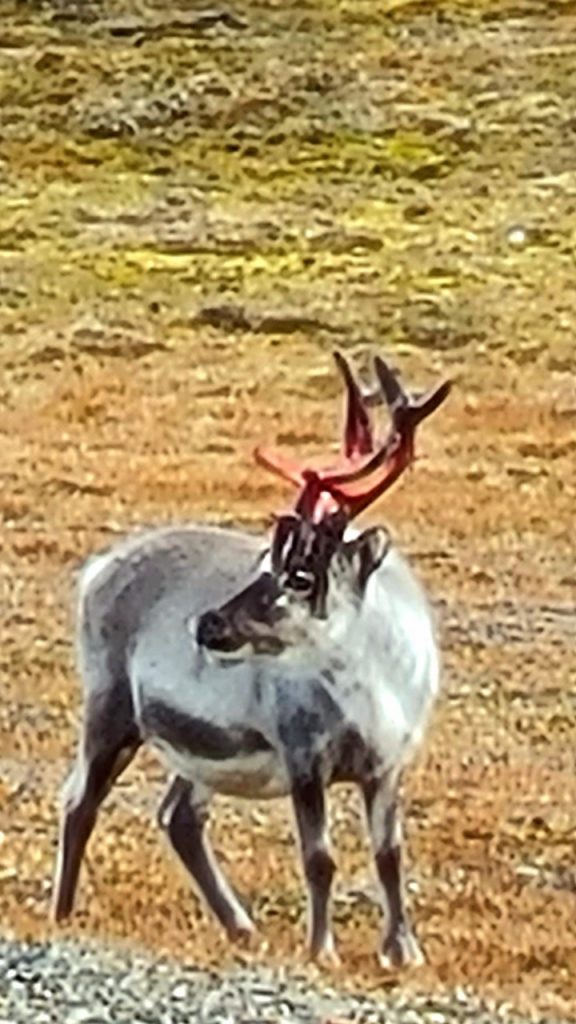
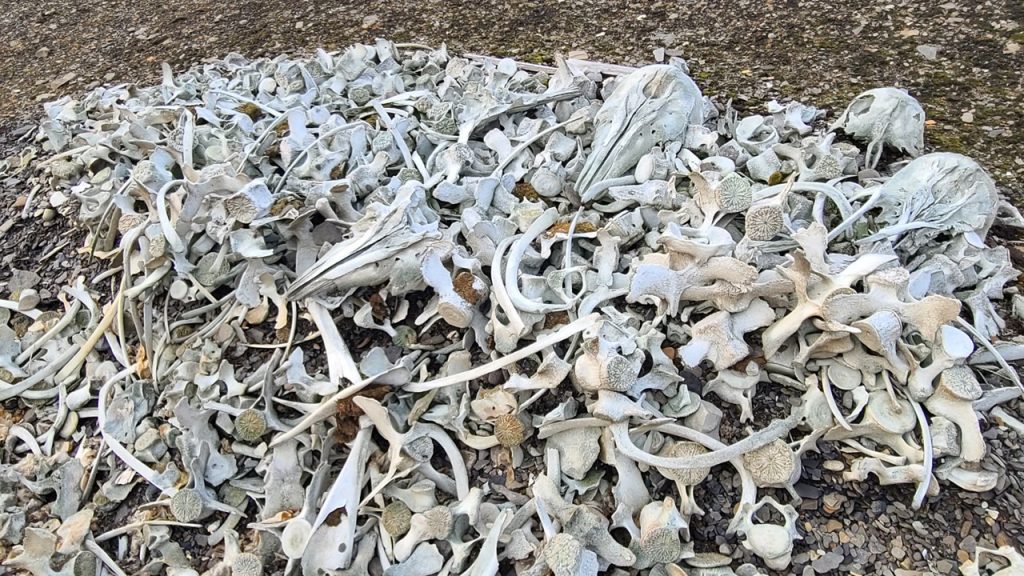
There were plenty of birds in Svalbard, 234 species, but there are no raptures. The most common bird species are the arctic tern, the barnacle goose, the pink- footed goose, the arctic skua, the ivory gull, the black legged kittiwake, the northern fulmar, (cousin to Albatross), the purple sandpiper , the common eider, the guillemot, the little auk, the rock ptarmigan, and our favorite –the Puffins – which we could see on the nearby cliffs. While drinking wine on the observation deck we saw our first beluga whales – snowy white with no large dorsal fins and ~15 foot long. That afternoon on our way to Ingeborgfjellet to see one of the islands’ largest (2300 ft) mountain, we saw a polar laying on a ridge nearby. Since we could not safely go ashore, the scouts put all of the zodiacs in the water so we could go view the polar bear from the sea. The polar bear was a female with a GPS collar around her neck. She wandered down the shore line for several miles as our 17 zodiacs watched her, never getting to close. Eventually she just sat down on the shore to watch us. We left her and continue down the coast to view the nearby glacier before returning to ship for the Captains reception and meeting our crew. That night after dinner, we visited the bridge where two staff are always on duty in 4 hour shifts.
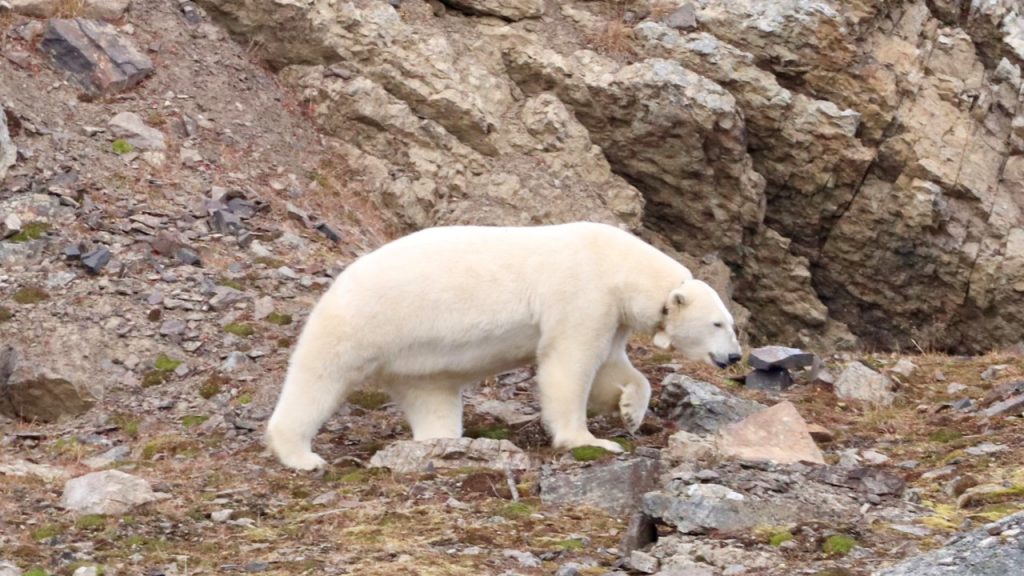
The next morning after breakfast we learned more about the geology of Svalbard. There are no bushes, shrubs or trees on Svalbard’s islands. The oldest rocks are a billion years old with little soil cover over ancient limestone. Later that morning, we took zodiacs and landed at Gnaalodden, walked to the end of the peninsula where we saw Wanny Wolstad’s legendary woman’s trapper cabin. The area was home to many birds and several foxes. It was here we found our first collectable beach glass. After returning to the ship, we saw another pod of Beluga whales including a baby whale. That day for lunch, we had a BBQ of: burgers, sausage, ribs, chicken, swordfish and leg of lamb with a salad bar and a desert bar, all on the rear of deck of the ship next to the pool. In the afternoon, we embarked on the zodiacs for 2.5 hour ride to tour of the Burgerbukta area with its ice caps and glaciers. From the zodiac, we collected a small iceberg to return with us to the ship and then sat quietly to listen to the ice which sounds like a gentle rain. Suddenly, we heard cracking and a loud “boom” as a piece of the glacier calved off and flipped over. We sped away to miss the wave that the calving caused and returned to ship for “happy hour” cocktails using the chuck of glacier ice we brought back with us. Dinner that night was salad and duck, followed by a guests $5 gift exchange. Roc ended up a laser pointer and Julie got well-appreciated hand warmers
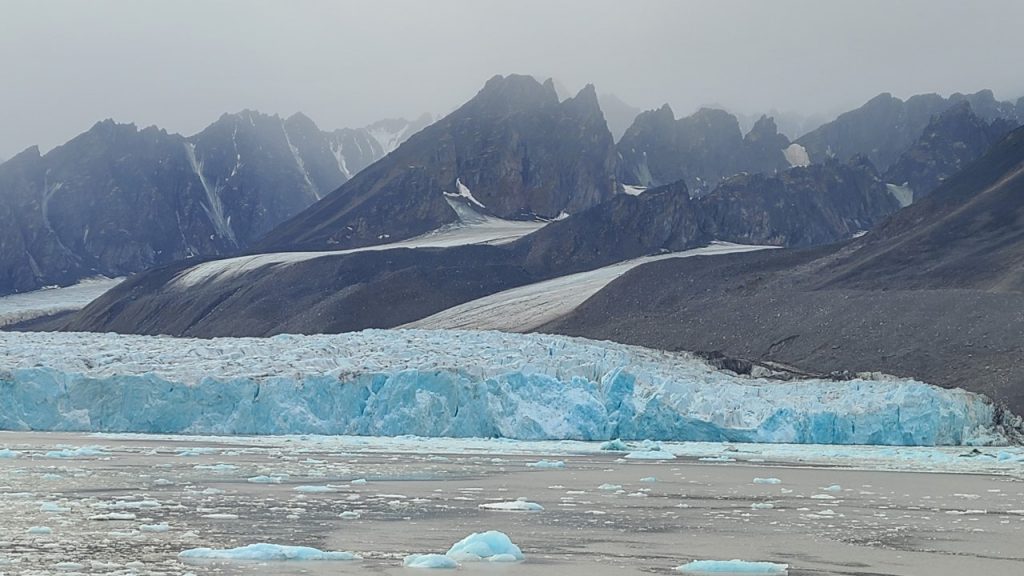
The next morning, Thursday September 1st, we woke to a fogged-in sea. But, by after breakfast, the fog had cleared and we boarded our zodiacs for a trip into Habenichtbukta Bay where we saw a giant sperm whale skull lying on the beach. Upon exiting the bay we came upon a large group of walruses and piles of walrus bones from previous kills in the 1940’s and 1950’s. We then traveled over to the next bay where we saw the remains of a number of trapper huts and a human burial site from the 1750’s. Then, on one of several little islands we came upon a pod of 4 walruses, and further on 20 more, and then 4-6 more walruses swimming in the water near us. We returned to the ship for lunch and a lecture on climate change recapping the findings presented at last international climate change conference. After lunch, a small group of hikers, (12, including Rocky), disembarked for a ravine climb/scramble up Kapp Lee – 1000 feet nearly straight up for 2.5 hours. At the top, they saw reindeer and got an excellent view from the top of the island. Julie went to inspect the trapper huts and shoreline and was able to watch ~100 walruses laying on the beach, occasionally moving into and out of the water. The walruses use their tusks as an extra appendage. They are very social animals with a breeding season in January. There are 2 species of walruses – Atlantic and Pacific, and their whiskers are very powerful and useful as they scour the bottom of the seafloor, vacuum sucking the innards of clams and leaving the clam shell behind. They eat ~175 pounds of clam per day, but only dive for ~5 minutes at a time. Both genders have tusks with the female’s being straight and slender and the male’s being thicker and bigger. Their skin turns pink when they get warm and turns white grey in winter. The families stay together as the females have a 10-month gestation period, and the calves are ~40 lbs. when born. Their lifespan is ~20 years. One of the hazards for the Svalbard wildlife is plastic pollution as 60-80% of the plastic comes from the fishing industry There is a “Clean up Svalbard” community project in place where all plastic is returned to Longyearbyen if found. Over 20 tons of waste has been removed from beaches so far in this 20-year project. In addition to the walruses, we have seen dozens of glaciers. A glacier is defined as “moving ice” – if the glacier does not move, it is a polar ice cap. Upon returning to the ship, we had a dinner of gnocchi and tuna with Andrea, our trip lead from Argentina. That night, we sailed through a channel to Brasvellbreen.
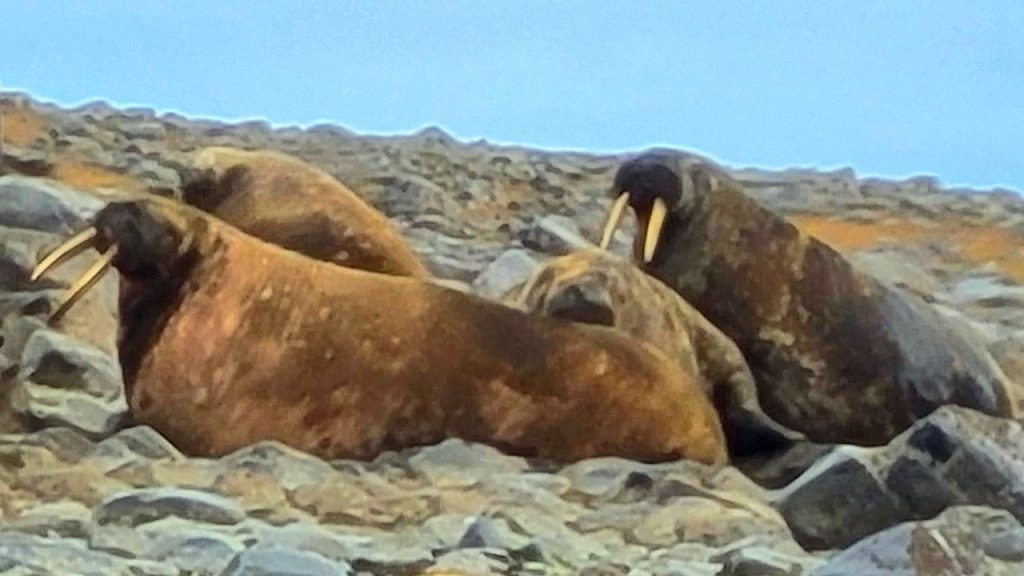
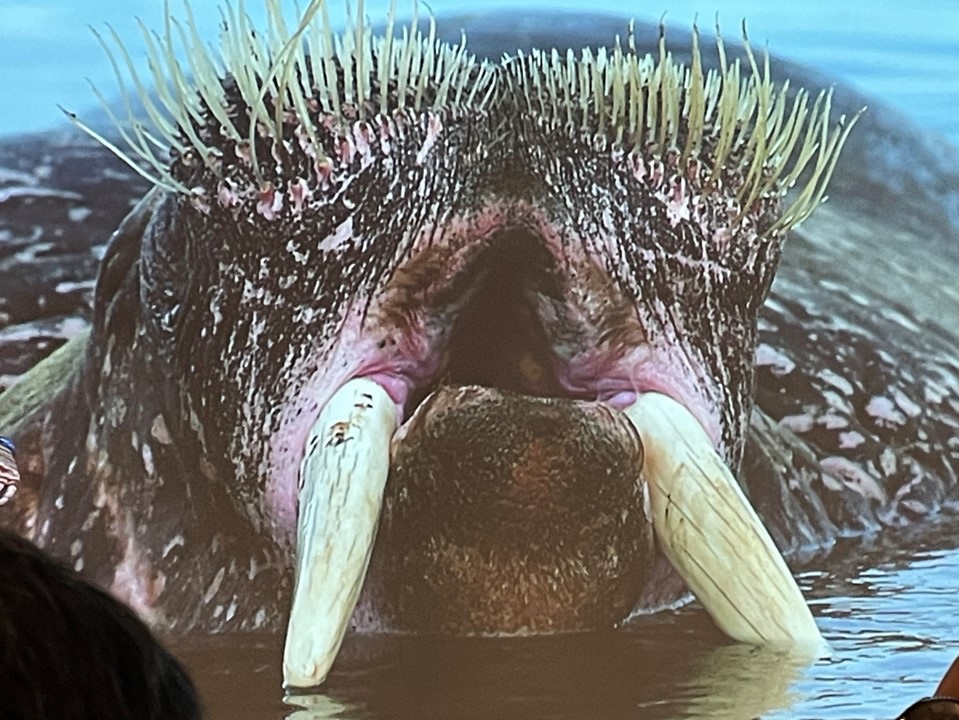
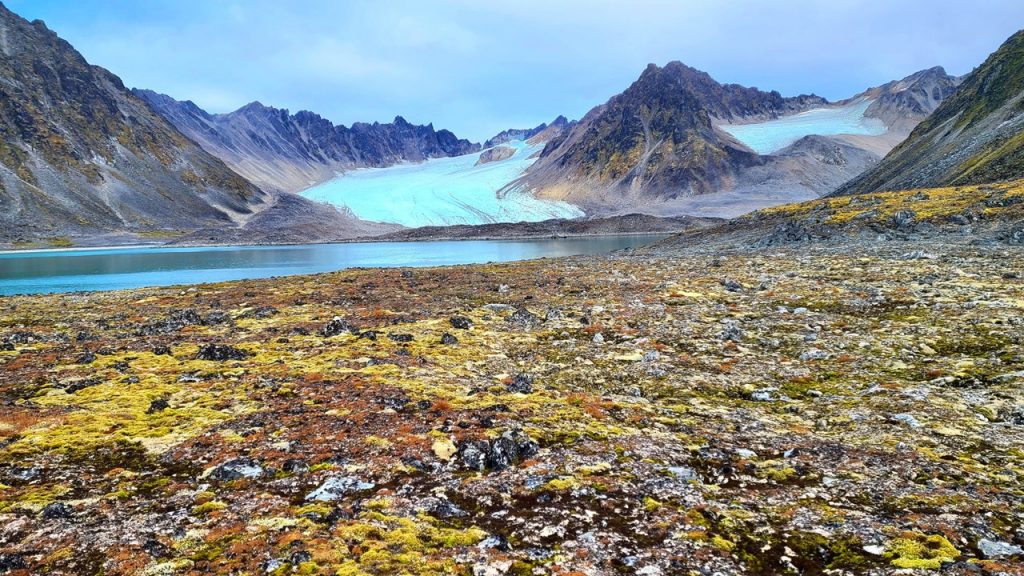
The next morning, we arrived at Brasvellbreen – a 100-mile-long glacier wall which is like a giant table 70-90 feet tall going on forever. Along the way there are several waterfalls and many birds. After a buffet breakfast, we spent some time learning more out our local guides. The all live in Longyearbyen under Norwegian law, but operate independently with their own mayor, and pay no taxes. No permanent residents are allowed in Svalbard, and no one is allowed to be born there or die there – they must return to the Norwegian mainland. In addition, being born in Norway does not confer citizenship – it must be applied for. In the winter, temperatures reach -40 degrees and the town hosts a Polar Studies University with 200 professors. Nearly all the guides arrived in Svalbard via studies at the University but the town has no banks, hosts no weddings, has only a single non-denominational church, and little crime. Actually, because of the threat of weather and polar bears, nearly all residents leave their doors unlocked to allow for emergency sheltering. Lomgyearbyen is also home to the Global Seed Vault where over 1000 species are currently stored, but it can hold 3,500 more. Every resident has an ID cord and each resident is only allowed 24 bottles of beer or 2-liters of hard alcohol per month. Dogs are the only pets allowed. On the average, 2 polar bears are killed per year for attacks on people in and around the town. The Svalbard Treaty allows no military presence on the island, although they have one of the largest defense satellite setups in the world. A series of above ground hot water pipes provide heating and keep the water lines from freezing, and the town is actually too far north to see the Aurora Borealis. All waste and trash is brought back to the mainland and there is no landfill allowed in Svalbard.
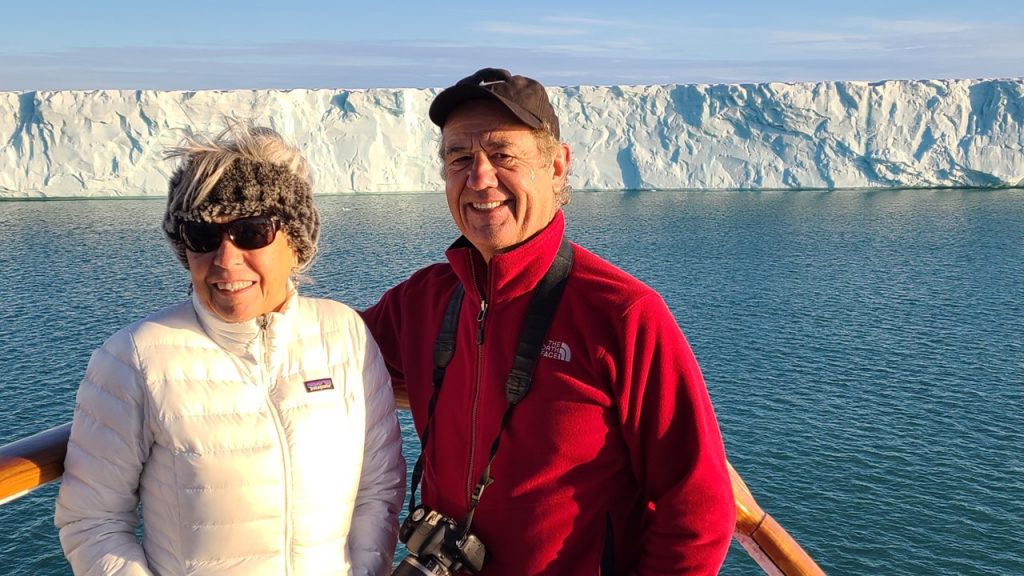

We continued north to the Nord Ausrlande area and the Maybrean glacier and icecap. This island is covered by a single glacier, part of the ~7700 billion tons of ice in Svalbard. In the past 10-years, the Svalbard glaciers have lost an average of 1.5 feet, as the age of the ice from one side to the other is billions of years old. That morning, because of the number of icebergs in the water, we were unable to make a zodiac landing at Vibebukta. However, after lunch we cruised on to Torellneset.and made a landing there. This area was a polar desert with walruses laying on a beach of stones. We saw one female that was nursing her young, and soon the beach filled with 10 others. On the way to this beach we spotted a Minke whale in the bay and a second Minke whale deep in the same bay where we were watching the walrus. After strolling and exploring the beach, we went back on-board for a lecture on whales, cocktail hour, and dinner. The next morning, there would be two optional hikes at Faksevagen – one would be of medium difficulty and about one hour long and the other would be ~3-miles, more difficult, but would afford a great view.
